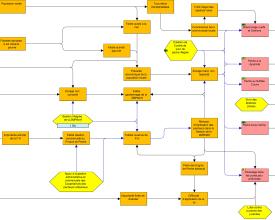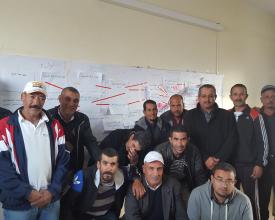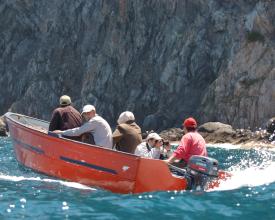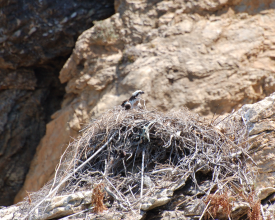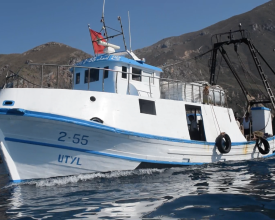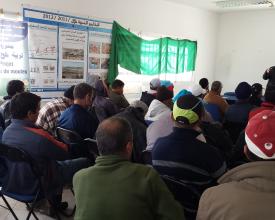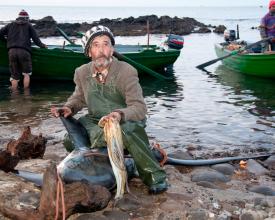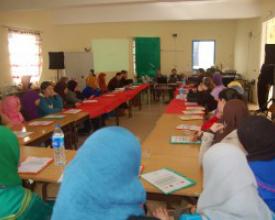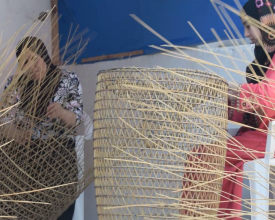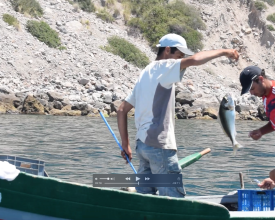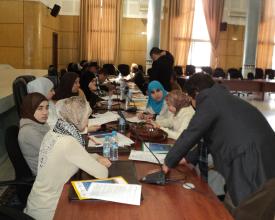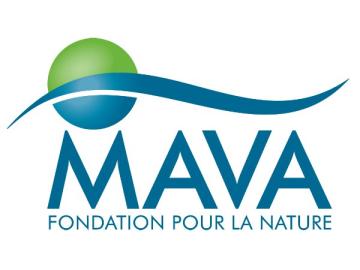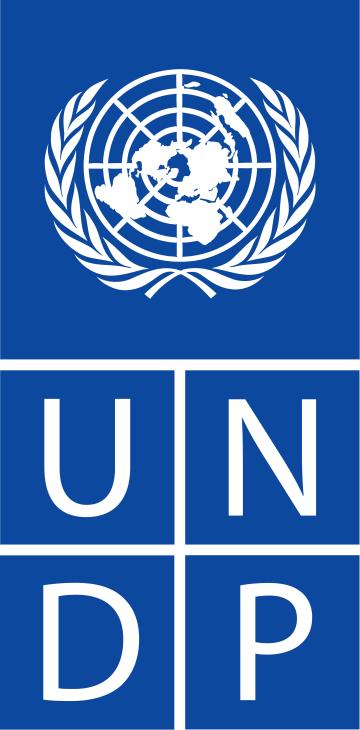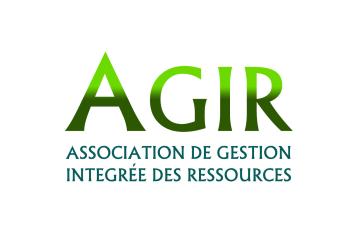
Sustainable Management of Morocco's Marine Resources
Implementation of an ecosystem-based participatory planning program for the benefit of artisanal fishermen operating in the Mediterranean. Under this program, fishermen were able to identify the challenges posed by illegal trawling and dynamite fishing. The creation of a monitoring committee allowed them to take their part in fighting these threats. Their overall income increased thanks to the commercial management of fishery products in the newly created cooperatives.
Context
Challenges addressed
- Illegal trawling in shallow areas within MPAs causes destruction of habitat and breeding areas for demersal species. Demersal stocks are declining.
- Dynamite fishing threatens the fish stock.
- Poaching of osprey nests has caused a local population decline.
- The lack of organization of artisanal fishermen does not favor a struggle against these multiple challenges.
Location
Process
Summary of the process
The first block concerns the marine ecosystem and target-species (such as the bald eagle). The direct threats on this biotope and the target-species are being studied through targeted research activities and involve all the stakeholders. These research activities are displayed in Block 4.
Block 2 addresses an indirect factor in the restoration of the biotope and the protection of endangered species through the establishment of no-take zones: the reinforcement of the artisanal fishermen’s involvement in the marine resources management plan of the National Park’s marine zone.
Another indirect conservation factor, addressed by Block 3, is the improvement of artisanal fishermen’s living standards by 30% in the MPA’s coastal zone. Additionally, participatory planning of a marketing strategy for the fishery product supports income-generating activities. This block enables the artisanal fishermen to organize themselves and form a conservation lobby.
Block 5 aims to capitalize on the experience of AGIR through a network of Mediterranean fisheries cooperatives aimed at creating more MPAs and contributing to the Aichi-Targets 6 and 11.
Building Blocks
Stakeholder involvement in the management of marine areas
Goals
- Improving the knowledge about threatened species by conducting targeted research and monitoring.
- Involving local communities in the management of coastal and marine resources, biotopes, and threatened populations.
Process
A workshop was organized to launch the project and to establish a climate of trust between the stakeholders. At least 50 representatives of the Gendarmerie, the Maritime Fisheries Department of the High Commissariat for Water and Forests and Desertification, the local fishing communities and the NGO AGIR joined the participatory workshop.
A multiparty caretaking committee was elected to involve all stakeholders. The committee is presided by the Governor of Al Hoceima Province.
The AGIR team and the fishermen are equipped to participate in a study of monitoring and participatory evaluation regarding the conservation state of resources and habitat. Monitoring of threatened flagship species is led in coordination with the relevant authorities.
Weekly field trips were organized for the monitoring of the surveillance and control program of illegal activities within the MPA.
A scientific report reflects on the new conservation state (habitat restauration, threatened species, and marine resources).
Enabling factors
- The establishment of a climate of trust between communities as well as state and institution partners, prior to the actual project launch
- Mastering adaptive management methods and the participatory education of a great number of artisanal fishermen
- The organization of participatory workshops to identify and correct the threats that put pressure on the entire ecosystem
Lesson learned
- The weekly monitoring and participatory caretaking field trips must be prepared in consultation with the administration
- In order to involve the local population, at least twenty participants, among them artisanal fishermen from the cooperatives, are being supported and educated. This education aims to give them the means to contribute to the monitoring and participatory evaluation studies regarding the conservation status of resources and habitats and the monitoring of threatened flagship species.
- It is necessary that the workshops take the fishermen’s schedule into consideration (during bad weather periods or breaks)
- At least 30 % of the local population has to be affected by the sensitization campaign on the protection of flagship species in the MPA. This campaign, carried out during the first year of the project, has to be supported by the participation of local and national media.
Community management of no-take areas within the MPAs
Goal
The artisanal fishermen of three cooperatives are trained and involved in the resource management plan in the National Park’s marine area.
Process
Organization of 2 x (3) training sessions on participatory planning as a resource management tool in the National Park’s marine area.
Proposal of no-take zones or Fisheries Reserved Areas (FRAs) within the National Park’s marine area.
A monitoring report for the captures within the National Park’s marine area are being prepared in a collaborative manner by the fishermen who provided the data and the team of AGIR who wrote the report, which served to evaluate the project’s benefits.
Enabling factors
- The establishment of a climate of trust between communities as well as state and institution partners, prior to the actual project launch
- The validation of no-take zones or FRAs by the fishermen and the respective authorities
- The monitoring report of fishery product captures in the National Park’s marine area has to be communicated to the AGIR fishermen by the experts in order to evaluate the project’s benefits.
Lesson learned
- The activities (weekly monitoring field trips and participatory species caretaking) prepared in collaboration with the administration, has allowed an increase in fishing resources of 30 %
- The involvement of local and national stakeholders in the restauration of biotopes and species has allowed a restauration ranging from 20 to 30 % according to the species and the ecosystems
- The choice of no-take zones has been made by the fishermen to tackle illegal fishing. The no-take zones correspond to the marine areas close to the cliffs affected by poaching and dynamite fishing.
- It is necessary that the workshops take the fishermen’s schedule into account (during bad weather periods or breaks)
- It is necessary that at least 60 % of the artisanal fishermen support the no-take zones.
Sustainable commercial management of marine resources in MPAs
Goal
The artisanal fishermen’s quality of life has improved by approximately 30% within the MPA’s coastal zone through good resource management. The MPA contributes also to an income increase via the implementation of a participatory strategy aiming at the commercialization of fishery products.
Process
The fishermen cooperatives organize participatory workshops aiming at the definition of a commercialization strategy for the artisanal fishery products. The goal is to reduce the global pressure from fisheries in the National Park’s marine area.
Creation of “Rotating funds for fisheries” to support income generating activities. These funds are available to the fishermen cooperatives, operating in the marine zone of the National Park, but also to their wives.
Enabling factors
- The establishment of a climate of trust between communities as well as state and institution partners, prior to the actual project launch
- The creation of a rotating fund aims to support the commercialization strategy of the fishery products from the National Park’s marine area
- The fund allows to support the launch and mentoring of a price and quality valorization project, for the benefit of the cooperative of fishermen’s wives and daughters
- Rotating funds for fisheries serve to assure the cooperatives' administrative and financial autonomy
Lesson learned
- The program’s activities aiming at the implementation of a commercialization strategy for the fishery products from the artisanal fishermen operating in the National Park’s marine area have to be prepared in consultation with the administration.
- The involvement of the local population is also very important for the project’s success. At least twenty members of the artisanal fishermen cooperative’s executive office have been supported and trained to enable them to contribute to the commercialization strategy for fishing products coming from fishermen cooperatives operating in the National Park’s marine area. This has allowed a 30% poverty reduction for approximately 1200 artisanal fishermen.
- The project’s financial viability is assured by the participatory planning and the local communities’ support for the sustainable commercialization strategy of their fishing products.
Participatory research and planning through a systemic and prospective sustainability analysis
Goal
In order to engage the artisanal fishermen in natural resource conservation, the analysis carried out has included sociocultural, economic and ecological topics. The goal was to fill the lack of data to allow all the stakeholders to realize the initial decrease in biodiversity and the solutions brought by the project.
Process
The participatory approach used by this study has allowed for all the stakeholders to accept the results.
The study was carried out in accordance with a systemic approach including several components:
- Scientific: “Sociocultural, economic, ecological indicators”
- Participatory: the study has not only involved the project holder, but also the stakeholders
- Prospective: the study has allowed to identify “current, potential and alternative scenarios”
The systemic analysis has led to an integrated action program for the sustainable management of the artisanal fisheries sector within the National Park’s marine area.
Enabling factors
- Artisanal fishery represents one of the main economic activities in the region. As a sideline, it also improves farmers’ quality of life along the Mediterranean coastline.
- The main constraints to the artisanal fisheries’ economic growth have negative impacts on product quality, due to the lack of landing infrastructure and commercialization.
- The flotilla’s fragmentation and isolation, which the fishmongers take advantage of, does not allow the fishermen to work under satisfying conditions.
Lesson learned
It is necessary to minimize the growth constraints on artisanal fisheries confined to the National Park’s fishing grounds. The reinforcement of fishing gear and equipment has to serve as a motivation for fishermen to stick to our integrated management plan.
Defining the artisanal fisheries sector remains an essential step in the process of implementing a commercial organization plan, which has to be subjected to future project propositions.
In the sociocultural plan, the fishing villages are confronted with a high rate of analphabetism. The fear of losing their jobs, translates itself to the high frequency of poaching, the use of dynamite or chemicals and illegal fishing.
It would be desirable to define a new zoning plan for the National Park’ marine area, which responds to the ecological conservation concerns and not only to those of fisheries resources. This would guarantee a sustainable development for a future approach of monitoring and participatory evaluation.
Network of Mediterranean Fisheries Cooperatives
Goal
An informal network of Mediterranean fisheries cooperatives was established in the Mediterranean MPAs.
Process
Implementation of a workshop on the exchange and sharing of knowledge and MPA management methodologies, for the benefit of national Mediterranean artisanal fisheries cooperatives.
Implementation of an online forum for the exchange of knowledge, methodologies and impacts concerning the project.
Implementation and publication of a popular guide about the self-management of MPAs.
Implementation of an external evaluation on the capitalization of the project.
Enabling factors
The exchange and sharing procedure followed the “Open Standards for the Practice of Conservation” formulated in 2007 by the Conservation Measures Partnership.
Informatics classes were organized to guarantee an effective use of the exchange forum.
It has been very useful to prepare two versions of a vulgarized guide regarding the self-management of MPAs: one simplified, destined for the fishermen and another one more detailed for the managers, project coordinators and institutions.
Lesson learned
- The forum must be established in consultation with the fishermen and the marine area’s respective administration.
- Following the project, several fisheries cooperatives have asked for the establishment of a MPA according to the standards and approach used by AGIR.
- Looking for financing to establish new MPAs
- Implementation of an external evaluation on the capitalization of the project
Impacts
After the project: Responsible fisheries emerged within the marine protected area of the Al Hoceima National Park (PNAH) (ZMPNAH) thanks to:
- The eradication of dynamite and copper sulfate fishing.
- The notable reduction of osprey nest disturbances and the doubling of the number of young ospreys.
- The eradication of illegal trawling inside the ZMPNAH. Our sensitization campaigns against juvenile fishing have contributed to the 2013/2014 adoption of a legislation obliging trawlers to carry localization devices; Vessel Monitoring Systems (VMS).
- The increase in marine resource abundance, estimated at 20 to 30 % among the species and the ecosystems. Local and national stakeholders were involved in the biotope and species restauration.
- The poverty reduction of 30 % for approximately 1.200 artisanal fishermen
- The project’s financial viability via participatory planning and the use of a sustainable commercialization strategy for the fishery products from the project zone
Beneficiaries
Some 3,000 artisanal fishermen operating in Moroccan Mediterranean, including:
- 700 in the Alborán MPA
- 500 in waters adjacent to the National Park of Al Hoceima
- 600 at the site of the Mar Chica lagoon.
Sustainable Development Goals
Story
“In 1987, then Biology Professor, I moved to the coastal city of Al Hoceima, in northern Morocco, where I volunteered with the American Peace Corps. I began working on osprey conservation in what is now the Al Hoceima National Park. At that time, the Rio Conference has not taken place yet and very few people in Morocco knew what conservation was. Today, things have changed and I am not alone anymore!”
An experience to replicate
In 2005, I received the Hassan II Prize for the Environment – an important national consecration. But I am also aware of the need to involve more people in my work. Therefore in 2008, I created the Association for Integrated Resource Management (AGIR) that aims to conserve the Moroccan Mediterranean coast.
My goal was not to take up the role of the local community, the artisanal fishermen or the State, but rather to implement a program based on a strategy and methodology of knowledge exchange and savoir-faire. In the north of Morocco, hundreds of research and participatory planning workshops have been organized, creating a real community academy working in the interest of more than 3000 fishermen and fishermen’s wives.
Among the concrete results, obtained in the field, can be named: the implementation of some MPAs, which only existed on paper before, henceforth self-managed by fishermen and fishermen’s wives cooperatives; the refinement of MPA zoning; the creation of new MPAs ; and an increased accountability for marine activities.
Today, the Al Hoceima National Park, once plagued by illegal fishing and trawler encroachment, has entered into a new era. Ospreys flourish, dynamite fishing has ended, and fishermen make a better living. From now on there is nothing left to do except of sharing our experience with other partner institutions, not only relevant to the Fisheries Ministry of Morocco, but also other South Mediterranean countries who wish to get inspired by AGIR’s approach.
Recipe for success
The association knew how to win the artisanal fishermen and local communities’ trust on the one hand, but also of those working at an institutional level and the international donors on the other hand. This gain of trust enabled the association to generate change in a collective dynamic way. International recognition came in 2014, when AGIR won the United Nations Equator Prize for Marine and Coastal Resource Management. I was also announced “Hero of the Mediterranean” in 2014 by the MAVA Foundation.
